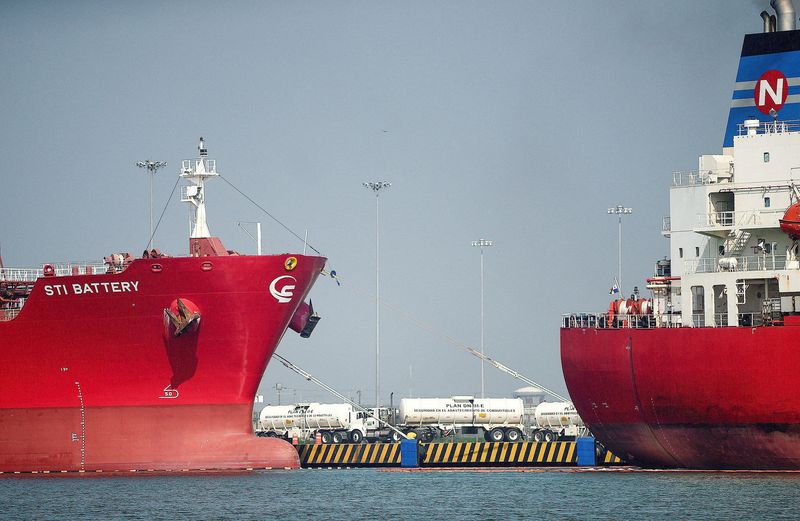
By Yuka Obayashi
TOKYO (Reuters) – Oil prices climbed on Wednesday, paring some of the previous day’s losses, as concerns about Hurricane Francine disrupting output in the U.S., the world’s biggest producer, outweighed worries about weak global demand.
Brent crude futures climbed 34 cents, or 0.5%, to $69.53 a barrel by 0430 GMT while U.S. crude futures were at $66.10 a barrel, up 35 cents, or 0.5%.
Both benchmarks fell nearly $3 on Tuesday, with Brent hitting its lowest since December 2021 and WTI falling to a May 2023 trough, after OPEC+ revised down its demand forecast for this year and 2025.
“The market rebounded autonomously as Tuesday’s drop was substantial,” said Yuki Takashima, economist at Nomura Securities, adding supply disruption fears from Francine also lent support.
“Still, downward pressure will likely continue in the near term as investors are worried about a slowdown in demand due to economic slowdown in China and the United States,” he said, adding he had lowered his forecast range for WTI for the rest of the year to $60-$80 from $65-$85 this week.
Francine strengthened into a hurricane in the Gulf of Mexico, the U.S. National Hurricane Center said on Tuesday, prompting Louisiana residents to flee inland and oil and gas companies to shut production.
About 24% of crude production and 26% of natural gas output in the U.S. Gulf of Mexico were offline due to the storm, the U.S. Bureau of Safety and Environmental Enforcement (BSEE) said on Tuesday.
On Tuesday, the Organization of the Petroleum Exporting Countries (OPEC) cut its forecast for world oil demand to rise by 2.03 million barrels per day (bpd) in 2024, from last month’s forecast for growth of 2.11 million bpd, it said in a monthly report.
OPEC also cut its 2025 global demand growth estimate to 1.74 million bpd from 1.78 million bpd.
But the U.S. Energy Information Administration (EIA) said on Tuesday global oil demand is set to grow to a bigger record this year while output growth will be smaller than prior forecasts.
Oil prices were also supported by a withdrawal in U.S. crude inventories.
U.S. crude oil stocks fell by 2.793 million barrels in the week ended Sept. 6 while gasoline inventories declined by 513,000 barrels, according to market sources citing American Petroleum Institute figures on Tuesday.
Eleven analysts polled by Reuters estimated on average that crude inventories rose by about 1 million barrels and gasoline stocks fell by 0.1 million barrels..
China’s daily crude oil imports rose last month to their highest in a year, customs data and Reuters records showed on Tuesday, but that was still 7% less than a year ago and year-to-date imports are 3% less than the year before period.
That has led Hiroyuki Kikukawa, president of NS Trading, a unit of Nissan Securities, to predict the market will remain bearish due to fears about slowing global demand, including China’s.
(Reporting by Yuka Obayashi; Editing by Muralikumar Anantharaman)
EMEA Tribune is not involved in this news article, it is taken from our partners and or from the News Agencies. Copyright and Credit go to the News Agencies, email news@emeatribune.com Follow our WhatsApp verified Channel





